My flight into Lima, Peru landed at 12:45am. By time I went through customs and exited Chezar Chavez International airport it was 2am. A cabbie approached me on my way out, “Miraflores? Barranco?” Why yes, Miraflores, please. How’d you know? Thank you. I loaded my stuff in his car and 30 minutes later was at Parque Kennedy in the upscale, Miraflores neighborhood of central Lima.
Having been tired after my flight, I failed to discuss price before the cab ride. There’s no meters in the cabs in Peru, so agreeing on a price before the ride is paramount. I figured $15-20, or ~50-70 Soles, would be a fair price. “Cuarenta,” demanded the cabbie. “Oh nice, 40 Soles. I’m getting a good price,” I thought, naively. I handed him 40 Soles, but he shook his head and barked, “Cuarenta dolares!” Awww WTF. I had a nice ride with the cabbie, chatting about Colombia, the United States, girls, and, of course, Donald Trump, and pleaded with him to give me a fair price, but he was not having it. “Cuarenta dolares es el precio normal del aeropuerto al centro,” he argued repeatedly. “Yeah, maybe for Machu Picu tourist rubes on a two-week vacation,” I thought. After some back and forth, he would not budge, and even threatened to call the police. I gave him S./120. which was a slight discount at (~3.3 S./USD), and walked away grumbling, mostly at myself for being the aforementioned tourist rube. A shitty ending to an otherwise pleasant cab ride.
It was a nice welcome back to Peru. I’d forgotten just how keen all the Peruvian locals are to rip off tourists. Peru probably gets more tourism than any other country in Latin America. And not just your typical South American tourist backpacking on a shoestring budget: rich Machu Picu (One of the Seven Wonders of the World!) tourists with thousands of dollars earmarked for their standard yearly 10-day reprieve from an annum of slaving. The Peruvians have adapted precociously. For anything that doesn’t have a set price, if you don’t prove to the locals within the first moments of a transaction that you know which way the wind blows, then bend over. Price gouging is an order of magnitude greater in Peru than the rest of Latin America. They’ll commonly gouge you for 2-4x the precio Peruano, whereas in, say, Guatemala a local might gouge you for 1.5x the normal price.
I walked a couple blocks and checked into Lucky Lodge Hostel at 2:45am. I had a dormitory to myself except one other occupant who was apparently out for the Friday night. I laid down, but sleep wasn’t forthcoming, so I read until I finally passed out somewhere circa 4am.
I awoke in the morning at 12:30pm, and wandered out for breakfast supplies. I cooked a big breakfast, and brunched leisurely until about 2:30pm.
I went to my room to shower, and found a beautiful Latina girl watching Netflix in the bed adjacent to mine. Noticing her light-skin, dark eyes, and facial structure, I ventured a guess, “Paisa?” She smiled cagily, a bit taken back by my correct divination, and affirmed, “Sí, soy de Medellin, pero vivo en Bogota,” and I met my bunkmate Viviana. We chatted a bit, but she was standoffish—maybe hungover, maybe apprehensive of the white devil she had to share a room with—so I took a shower and headed out to wander around town.
Being my third time in Lima, I floated around town with a strange confidence and familiarity. Everywhere else I go, it’s my first time being there. Everything is novel. My first day in town, I’m usually just trying to get my bearings: figure out with way is North, find landmarks, find the main plaza and a place for groceries, and scope out some decent looking cafes, bars, and restaurants. In contrast, I walked down to Larcomar and Barranco on the Pacific Coast, then back to Parque Kennedy to play with some cats without having to consult a map. I even provided directions to some sore-thumb German tourists looking at a map with confusion in the park.
It was Saturday, the best day of the week to hang out in Parque Kennedy. There’s dozens of local artists with their works displayed on the sidewalk surrounding the park, and there’s music and dancing in the amphitheater all afternoon and evening.

I watched the Peruvians dance in the amphitheater from the perimeter and couldn’t help but dance myself. An elderly woman was similarly dancing in-place solo on my right, so I obliged and spun her a couple of times. We both blushed a bit the first spin.
Later, I walked the perimeter of the park, admiring the artwork. I stopped in front of a series of paintings that caught my eye—silhouettes of a voluptuous naked lady on dark blue background. The silhouettes formed by psychedelic streams of multicolored paint dripping down and off her body.
Like an apparition, a little old man appeared by my side. “Una modela de la Universidad,” he said, indicating that he was the painter. At first, I couldn’t believe he was the artist. They were sexy paintings, so I’d have thought they would’ve been painted by a younger, maybe hippyish gentleman. But a horny old Peruvian codger makes sense too, I guess.
We got to talking. He was a retired art professor who still painted for fun. He was smiley and funny. He implored me to buy one the paintings. I’d resisted buying paintings I’d liked previously in my journey due to the burden of having to travel with a tube containing the painting or go through the hassle of sending it home. Something told me I couldn’t turn down this cheeky old man and this was the point I finally buy a painting. “It would make a nice piece for a bathroom,” I thought. “It’s approaching the end of my trip, I could deal with carrying a clunky tube for a couple months,” I reasoned. We negotiated price starting at S./500, and settled on S./140.
In the evening, I hung out with Viviana. She warmed up to me after we somehow started talking about meditation. She is big into spiritual teachings, especially Osho, and explained she doesn’t like to share her energy with unenlightened bores (which she assumed me to be upon our first encounter). Turned out, she was into all types of weird shit, just like me. We talked at length about all our esoteric fascinations. We even did some telepathy experiments together.
The following day, I did yoga on the roof of the hostel, made an elaborate breakfast, and then played poker and relaxed all afternoon. Nothing of note to report on the poker front.
I also spent the next day laying low. I planned my route into Bolivia, deciding to go down to Arequipa then over to Puno and Lake Titicaca. I wanted to go back to Cusco to take part in another San Pedro ceremony, but decided against it for the sake of expedience as the overland routes through southern Peru are difficult due to the Andes and often take 20+ hours for distances that look short on a map. Besides, San Pedro is actually legal to transport into the US, so I can order it online and have my own ceremony 😛
In the evening, Viviana made me dinner. It was a traditional Colombian ajiaco, or mixed stew. Her cooking was flavorful, better than the average Colombian food.
After dinner, we sat on the front steps of the hostel goofing about. We drank tea and shared various Youtube videos.
I regrettably failed to make a move. Looking back, I feel like a fool. Viviana was totally into me, and I her. I’m always hesitant to try and get with girls I’m sharing a dormitory with. At first blush, it seems like a good situation. However, if your advances don’t go as hoped, then you’re the creepy guy she still has to (awkwardly) share the room with. That’s what I was thinking in the moment. In retrospect, LAME! She surprised me with dinner for Chrissakes! C’mon, Matt! I can’t believe I shit the bed on this one. As I sit here and relive the moment while writing this, I want to slap myself silly.
The next day, I said goodbye to Viviana and we exchanged contact info. I took a taxi to Plaza del Norte Terminal. The overnight bus to Arequipa wasn’t until 5:30pm, so I killed a few hours in the bus station writing and reading.
I arrived in Arequipa at 12pm the next day. I took a cab to Mango Hostel, a block south of the main plaza.
Arequipa is the second largest city and former capital of Peru. Buried in the dry, arid southern Peruvian foothills of the Andes, the towering peaks of several snowcapped volcanoes surround the city. The city lies at 2300m above sea level. It is bright, sunny, and warm during the day. However, once the sun sets, the radiation dissipates quickly into the clear skies and the temperature rapidly drops towards freezing. Arequipa is the heart of Inca territory in South America, and many signs of Incan heritage can be seen throughout the city including people donning traditional garb. It is also the wealthiest city in Peru owing to old money from its days as the capital city and rich natural resources nearby.
I headed out to wander around and look for lunch. I found myself at a big indoor bazaar market, Mercado San Camilo. I weaved through the aisles bulging with stacks of fruits and vegetables and through the section of dismembered cows and pigs to find a stall with half and whole chickens splayed out over a grill, being basted with a lime green salsa as they cooked. I had a plato del día with the chicken for S./12.
After lunch, I went on a free walking tour of Arequipa at 3pm. The tour went to the usual stops: parks, plazas, artisanal markets, churches, government buildings, etc. It was somewhat unremarkable. However, one thing I must say about Arequipa is that it has one of the nicest central plazas in Latin America. That is saying something when you consider that every city in Latin America has a plaza or square intended to be the central gathering place in town, many of them elaborately designed.

The tour also stopped at a café, and on the recommendation of our guide, I had a special drink of the region (I believe it was called the Diana)—coca tea with frothed with milk, honey, and caramelized sugar. Delicious. The walking tour ended at a bar where the group was treated to shots of pisco sour.
After the tour, I went out for beers with a group of people from the tour. While having beers, we decided to make reservations for a two-day trek of Colca Canyon, the second largest canyon in the world, for the next morning. Unfortunately, we learned the tour departs at 3:30am.
Wandrille from France was Couchsurfing with a host who owned Hatunpa, a popular restaurant in Arequipa. Wandrille announced he was going to dinner at the restaurant of his host and invited the group, but most declined, opting to get to bed early instead. Bertea from Poland and myself elected to join him. Good decision. I had a Rocoto Relleno, or pepper stuffed with chorizo, soft boiled egg, and whole bunch of other vegetables and spices. The food was gourmet, and the owner/Couchsurfing host treated us to a couple dishes and dessert free of charge.
After dinner, I ran a couple of errands to get supplies for the trek, then managed to get to bed by 9:45pm.
The next morning, I woke at 3am. I hurriedly packed a bag, washed, dressed, and made breakfast. I threw my big backpack into a storage closet at the hostel, and then waited out front in the cold for my shuttle van. The van hadn’t arrived by 4:20am.
Finally, I received a text from our group. The tour was cancelled. Our group of six was supposed to go on the trek with another group of six people. However, people in the other group of six were sick and couldn’t go, which made the trek uneconomical for the tour operator, and they cancelled it on us. Well that’s disappointing. And I just had coffee with breakfast. Turds.
By about 6am, I was able to get back to sleep for a few hours. At 10am, I met the rest of the group in the main plaza, and we went to the tour agency to get refunds. The others in the group were all on tight travel timelines and couldn’t do the two-day trek the following day, so they were extra disappointed. I booked a tour with a different agency for 4am the next day.
After getting our refunds and griping to the tour agency, the group all went to Mercado San Camilo together for lunch. We had ceviche, another specialty of Peruvian cuisine.
After lunch, we walked 30 minutes to the northwest of the city to visit Mirador Yanahuara, a lookout with views of the twin Misti and Chanchani Volcanoes that loom over Arequipa.
I broke off from the group to return to the city center and book a trek for the next day, then carb loaded at La Lucha Sanguicheria, and got to bed nice and early.
The next morning, after doing the same predawn fire drill (sans coffee) as the prior morning, my shuttle picked me successfully at 3:30am. I managed to get a few hours of sleep during the four hour commute north to the village of Chivay.
There we had ‘breakfast’, which consisted of tea, bread, and marmalade. We’re supposed to hike for eight hours today and they are feeding us with just bread?! I’ve been on a few treks like this, and the meals are usually quite lacking. Knowing this, I brought a bunch of supplies to augment the meals. The others in the group looked on enviously as I pulled an avocado, butter, and chocolates out of my backpack and started making avocado sandwiches. I shared some, but greedily tried to ingest a 1000+ calories for the impending hike.
After breakfast, we loaded back into the van and drove another hour. We stopped briefly at La Cruz del Condor, a lookout where the sacred Incan birds can be seen floating through the canyon. A pair of condors put on a show for us, swooping 30 feet overhead a few times.
The van let us off on at a camp on the side of the road where my group of 10 met our guides, Ivan and Mayra. The trek basically consisted of a circle through the canyon. We went south down one face of the canyon, across the river at the bottom, then up the opposite face of the canyon before stopping for lunch. This leg of the journey took about 3.5hours, with a few stops. It was challenging mostly due to the thin air and relentless sun. After lunch, we hiked north along the top of the far side of the canyon before heading back down into the valley to stop at a hostel for the night.
The next morning, our group departed at 4:30am. This leg of the trek basically included a climb 1000m, switchback after switchback, up the wall of the canyon. This was the most challenging part of the trek.
A couple of hours in, several people in the group were having difficulty with the altitude requiring frequent stops. I was tired, but mostly doing fine. The frequent stops were messing up my rhythm, so at one stop I just kept going.
After about 3.5hours of hiking, I reached the top, and waited for the rest of the group. The sun had just poked above the Andes to the East, but still wasn’t providing much warmth as the wind ripped through canyon, chilling me to the bone once body heat from hiking started to fade and sweat started to freeze. Luckily, a sweet old Andean lady was selling coca tea at the top. I bought a few cups of tea, gobbled down chocolates, and hid from the wind by a rock embankment until my group arrived 30 minutes later.
Finally, we hiked another 45 minutes through fields tended by Andean farmers to arrive at the town of Cabanaconde where we had breakfast. After breakfast, we were picked up by our shuttle van, and the rest of the tour was Japanese-style, as we headed back to Arequipa stopping at a few sights and lookouts along the way, arriving at 6:30pm.
Back in Arequipa, I took a much-needed hot shower. I headed out and gorged at Chara Tacos before passing out early.
The next day was Sunday. I did yoga on the rooftop terrace of the hostel, cooked a big brunch, then settled in for a day of rest and poker. It sucked. I had to play in the front room of the hostel where the wifi was strongest, but the room was lacking comfortable seating. Somehow, I managed to grind up a couple big stacks, and then the internet cut out for 20 minutes at 7pm during the critical stages of the tournaments, and I busted both before the final tables for chicken scraps. 3rd world problems.
The next morning, I bought a bus ticket to depart Arequipa for Puno on the eastern border of Peru.
Before I left, I went looking for a baby alpaca sweater. Arequipa is the world capital of alpaca products. Baby alpaca wool, worth more than its weight in gold, is probably the best substance in the world for keeping warm in cold weather. Heading further from the equator during winter in South American and lacking much cold weather clothing, I figured I needed to shore up my travel wardrobe. Most of the sweaters I encountered were fakes. Real baby alpaca wool is smooth, soft, and glorious, but most of the hucksters in town were selling coarse ‘baby alpaca’ products. To make sure I got the real thing, I decided to pay up and went to a couple high-end places, eventually getting a nice sweater and free scarf at Sol Alpaca for $120 after negotiating down from $180. I reasoned a similar quality sweater would cost $300+ back home. It has turned out to be a good investment—I’ve literally worn it every day in the month since buying it.
I skipped town at 2pm, and, after winding southeastward through the foothills of the Andes, arrived in Puno at 8:30pm. Getting off the bus it was cold. 35F. Clear sky, no wind. Just dark, and cold.
I took a petti cab from the bus station to my hostel. Two blocks from the bus station, I received my first welcome to Puro: a group of dogs ravenously ripping at something in the gutter—the flayed head of a bull. Its eyeballs, still in the sockets, followed me as I passed by in the rear of the petti cab.
Puno is a city on the shore of Lake Titicaca. It is a transportation center for all ground traffic passing between southeastern Peru and Bolivia. The city is somewhat nondescript, with man dusty, tan dirt roads running from the lakeshore up into steep Andean foothills that encircle the lake. The city lies at 3800m above sea level. The proximity to the sun makes sunburn is a huge concern here as the solar radiation begins to redden skin after just a few minutes of exposure. That said, it is cold. The locals say there are two seasons in Puno: Cold and Colder. The main thing for a tourist to do in Puno is visit Uros, inhabited floating islands in the middle of Lake Titicaca.
I checked in at Lucky Your House hostel (yes, I like hostels with ‘luck’ in their name). Even in the hostel it was cold. Nearly none of the buildings in Puno have heat. I dropped my bags, bundled up in scarf and beanie, and headed out for dinner. I found myself at a small mom-and-pop type restaurant just off the main plaza where I again had Rocotto Relleno. Not quite as good as the previous one, but still amazing. Something about a baked red pepper stuffed with chorizo and cheese hits the spot in the brisk, cold nights of southern Peru.
The next morning, I went on a tour of the floating islands of Uros. A group of indigenous farmers decided to build reed islands in the middle of Lake Titicaca in an effort to escape political and cultural oppression. A community of people still live on these islands to this day. Leaving from the main dock in Puno, a powerboat drove 30 minutes to the islands. The President of the floating islands, a 29-year-old indigenous gentleman by the name of Walter gave our tour group a talk on the history of the islands, and demonstrated how reeds from the lake are used to construct nearly every aspect of the islands: houses, furniture, boats, and the islands themselves. Then we were given some time to explore the islands, and Walter proudly showed me his one-room house where he lived with his wife and baby daughter. Then we were taken for a boat ride on a double-decker reed boat before returning to Puno.
It was interesting to see these peoples’ subsistence lifestyle. They mostly get by on fishing and making arts and crafts. The men go fishing every morning, returning by about 9am, then spend the rest of the day maintaining the islands and hanging out in the village. The women cook, clean, look after the kids, and spend much of the day making jewelry, art, blankets and shawls. They go into Puno every Sunday to sell fish and handicrafts, and buy supplies. They seem to have a lot of free time and have a rather simple, relaxed life.
In the afternoon, I had a plato del día in a small out of the way restaurant, and spent the afternoon wandering the city. There were loud cheers emanating from a gymnasium across from my hostel. Some sort of regional girls high-school volleyball tournament going on, and I watched for a while.
In the evening, I had dinner at a decent little restaurant, La Casona. While reading the news on my phone, I noticed it was the 4th of July. Whoa, I had forgotten. I had a nice steak, a couple beers, and a shot of pisco sour to celebrate by my lonesome, while finding it hard to believe I had been away for two consecutive years 4th of July celebrations at good old Klinger Lake.
The next morning, I took a cab to the bus station at 7am. I bought a ticket for the 7:30am bus to Copacabana, Bolivia on the opposite side of Lake Titicaca.
When I went to board the bus, I handed the bus driver my ticket and passport. “Americano?” he asked, and I nodded. He waved his finger and told me no Americans. The visa requirements for US citizens to enter Bolivia are fairly onerous, the second worst in South America after Brazil. I protested, and, after going through the list of documents I needed, and confirming I had everything required (except for an itinerary), the driver said I could go on the condition that the bus would only spend 45 minutes at the border and if it took me longer the bus would leave and I’d have to take a taxi into Copacabana. I agreed and boarded the bus not knowing what to expect, but hoping for the best at the Bolivian border.


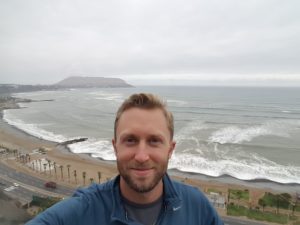
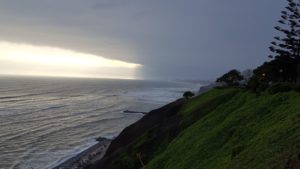
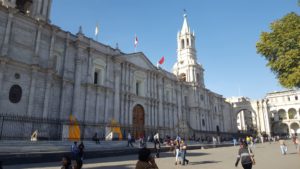
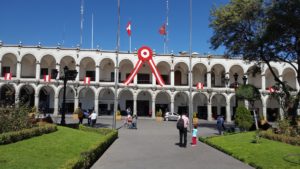
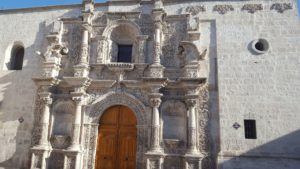
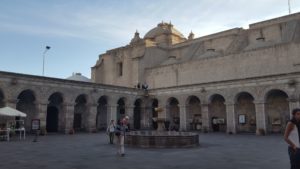
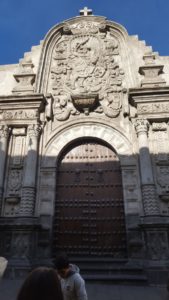
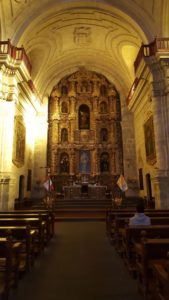
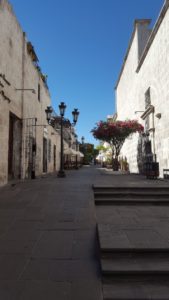
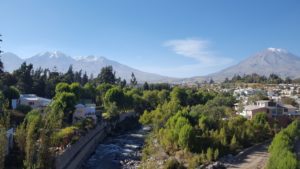
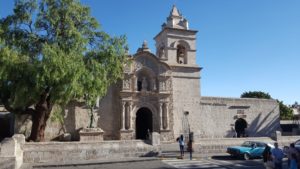
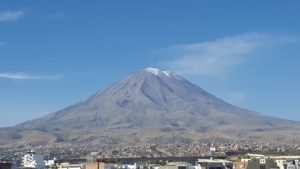
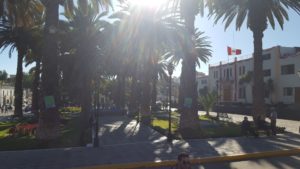

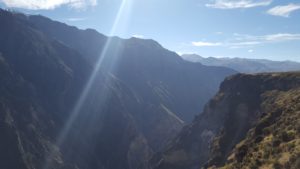
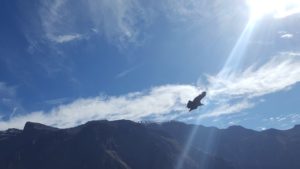
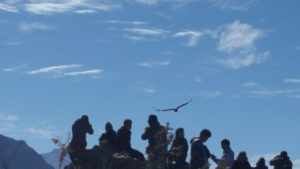
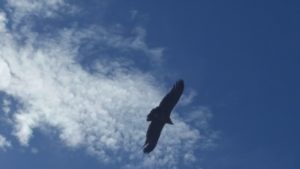
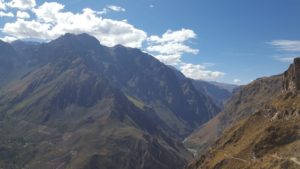
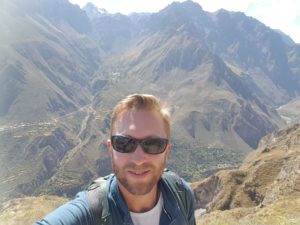
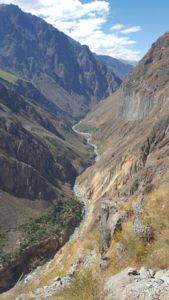
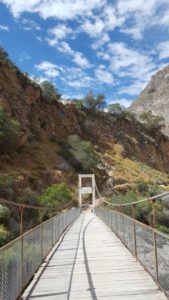
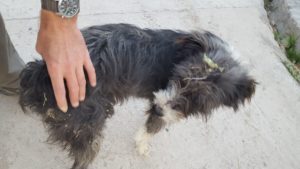
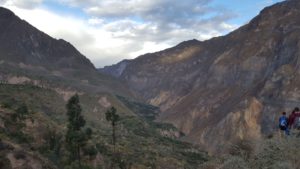
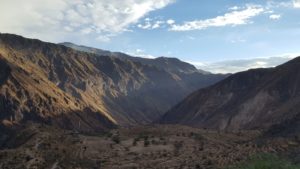
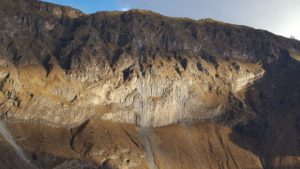
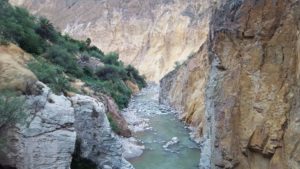

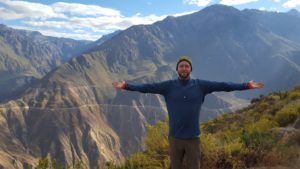
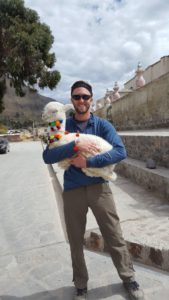
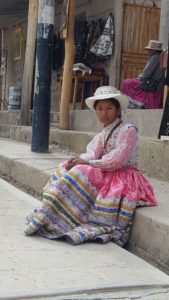
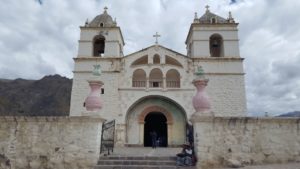
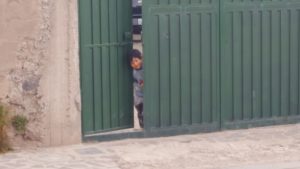
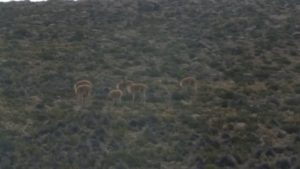
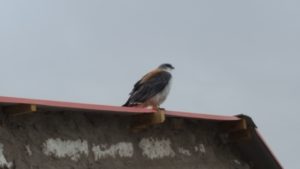
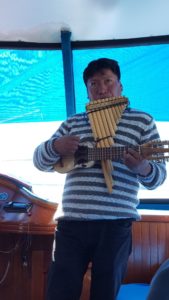
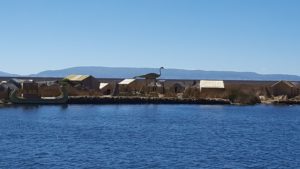
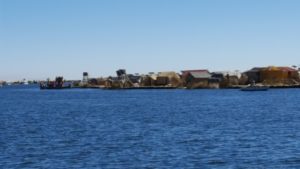
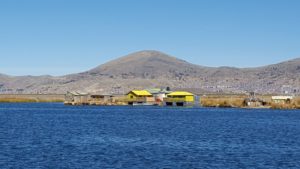
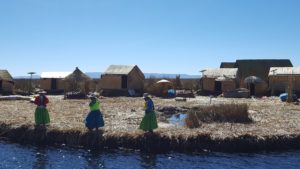
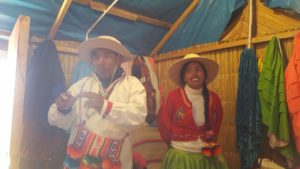
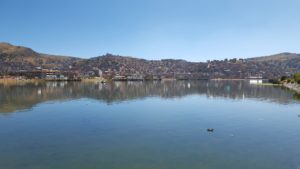
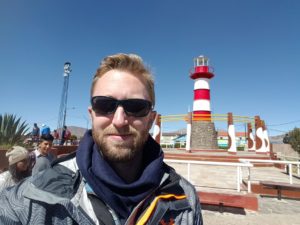
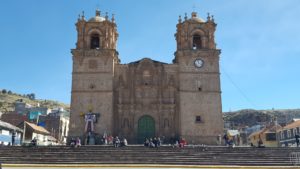
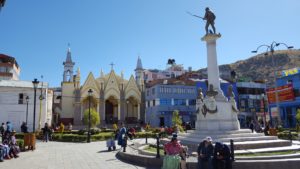
The photo of the Peruvian woman on the step was by far my favorite! I have shamelessly saved this photo.